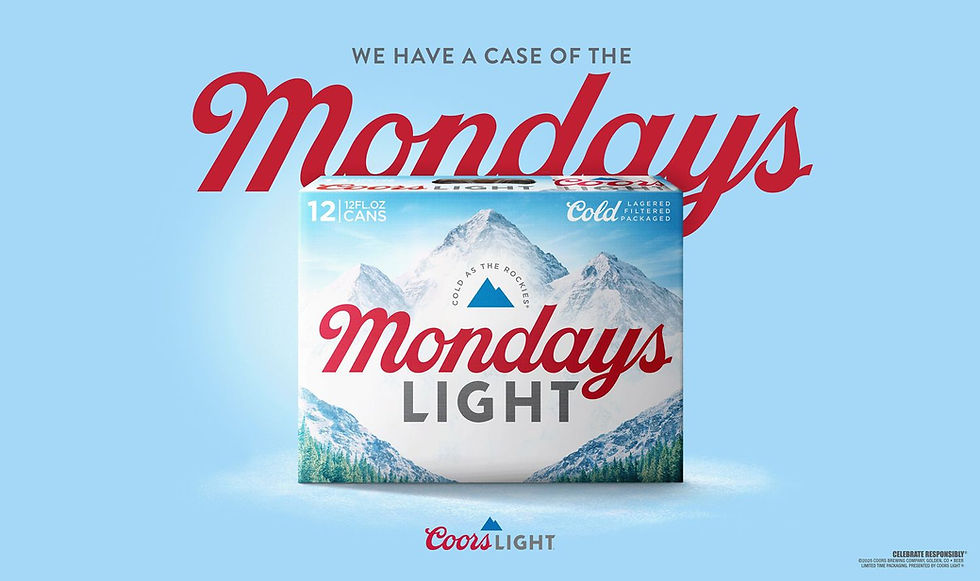Advertising Clichés: How Accurately Do They Reflect Our Culture?
- Brooke Lighton

- Oct 18, 2024
- 4 min read

I’ve done a lot of marketing in the healthcare sector over my career, and every time I see or hear “World-Class Healthcare, Right Where You Live,” I think, not that again! Having done work for Florida hospitals, this particular cliché makes sense, as many of their patients are aging snowbirds, living only part-time in the state and leaving northern cities behind to receive world class healthcare from renowned providers. For Florida, “World-Class Healthcare, Right Where You Live” has some meaning. It loses its impact, however, when you see it everywhere.
Although the point is well taken, being within commuting distance to the best healthcare is essential in a populated state like Florida, but there should be more than one way to say it.
In fact, there is.
We pitched a Florida cancer center and came up with a campaign that had the basic theme, but we served it up in a number of ways: “Right diagnostics. Right specialists. Right support. Right here.” Another version: “Right tech. Right team. Right outcomes. Right here.” In each case, we were able to add new benefits with the same ending: Right here.” It worked nicely, but we didn’t get the account. The marketing director went for — you guessed it: — “World-Class Healthcare, Right Where You Live.”
Would we have done it differently? No. Sometimes you have to walk away from what the client wants and stick with what you believe is best practice. So how is pharma handling clichés these days?
A look at pharma
In the pharma category, you witness (mostly) overweight people skipping and dancing through different venues: zoos, yard sales, cruise ships, train stations, offices — the list goes on, but the format is always the same.
Pharma TV spots have another seeming cliché in common: while we watch people enjoy life to the fullest, we hear a lengthy, often scary, list of side effects. The voiceover runs through frightening things in an uplifting, hurried tone. Example: side effects can cause rash, headache, dizziness, diarrhea, constipation, dry mouth, stomach pain, drowsiness, insomnia, joint pain, muscle aches, blurred vision, chest pain, anxiety, mood swing, allergic reactions, heart problems, suicidal thinking, and so on. Some side effects can even cause potential death.
I presume the happy venues, people enjoying life, and the upbeat voiceover are a better alternative than showing miserable people in the untreated phase of a disease. But after seeing these spots repeatedly, I have to confess: I couldn’t tell one drug from another if I just heard the name. Mostly, I bail on these commercials.
According to VOX, only the U.S. and New Zealand allow drug companies to market their products directly to consumers, with this style of commercial gaining traction in the 90’s. The rest of the world must market directly to physicians.
“Drug companies are not required to tell patients how well their drugs actually work or really give any context at all. Companies don’t have to say how many people will actually benefit from the drug, or how many might be harmed. They also don’t need to mention cost, whether there’s a cheaper generic version of the drug, or whether improved diet and exercise could help a person’s condition more than their medication.”
So, it seems when it comes to pharmaceuticals, we’ll continue to see (mostly) overweight people dancing and happily skipping through venues while we listen to a dreadful list of side effects.
Now, let's take a look at the role diversity plays in today’s advertising culture.
Diversity wins the day
Although not necessarily a cliché, another thing I noticed about commercials lately: many families are portrayed as mixed race. Full transparency; we adopted our daughter in China back in the 90’s, so I am myself part of a mixed-race family. According to VOA News, interracial families in commercials are a positive trend. Here’s how they put it:
“A happy interracial family hugging each other while wearing apparel from clothing retailer Old Navy. A smiling Black man giving his white girlfriend an engagement ring in a State Farm Insurance ad. And a biracial couple and their kids on a road trip in a vehicle made by Hyundai. These are among the increasing number of advertisements selling everything from cereal to prescription drugs that portray the American family in ways very few companies and advertising agencies would have dared a generation ago.”
Brands want customers to know they are supportive of diversity in our culture. According to Subdodh Nhat, a marketing professor at San Francisco State University, while these ads may attract consumers from biracial families or relationships, they also pull in customers whose values align with the diversity our culture is seeking.
What’s one other thing I’ve learned through my career? Descriptors can become clichés, but that’s not necessarily a bad thing.
How descriptors create clichés
When I worked for a global agency, we did extensive research for our clients. On the subject of clichés, or what terms attract and why, one study was quite revealing. The client was a frozen food brand launching a line of quick, heat-and-serve dinners. Participants were ushered into one of two rooms. In one room, dishes were given enticing names like, buttered green beans, grilled sliced steak, creamy whipped potatoes, luscious peach pie. In the other room, items were simply labeled, steak, mashed potatoes, green beans, peach pie. No surprise; the room with the yummy names outperformed by double.
So, can we say marketing is still in the business of clichés? Yes, but change is a refreshing constant as well.



Comments